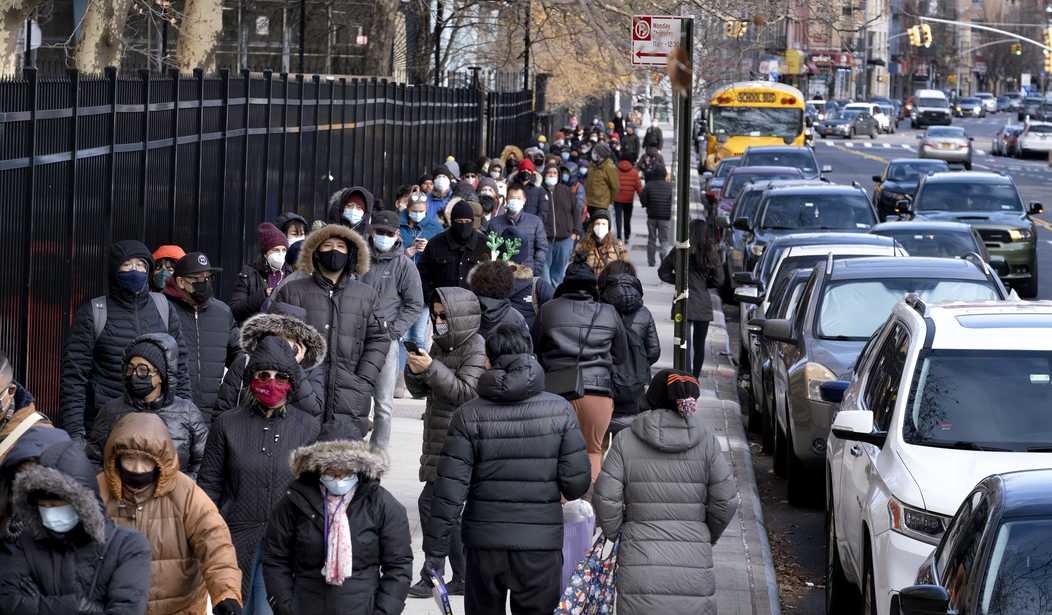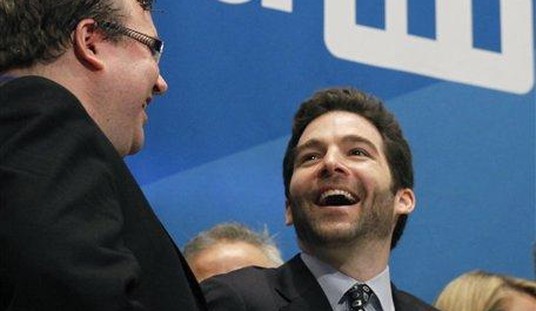Would you pay $100 to drive into Manhattan?
Well, according to an article in The Atlantic, the fee should be that high because “cars just aren’t compatible with cities.”
"Cars just aren’t compatible with cities," @AnnieLowrey writes in an essay on New York's new plan for congestion pricing. https://t.co/mzTxSmS3DR
— The Atlantic (@TheAtlantic) November 7, 2023
Having driven in Manhattan I can attest it sucks eggs, although frankly doing any kind of traveling in Manhattan sucks eggs. That’s why the most expensive real estate in the city is the closest to the places you want to go, and why cabs are such a popular choice. Anything to avoid driving.
However, most people don’t have that choice. Even in transit-heavy NYC, the share of commuting done by bus or subway is under 50%. If you can live near work, you walk. But lots of people drive cars, which is why the streets are so crowded with them.
Next year, congestion pricing is coming to New York City. And maybe, just maybe, the toll for motor vehicles entering the lower half of Manhattan should be set at $100.
That number comes from Charles Komanoff, an environmental activist, a transit analyst, and a local political fixture. It represents neither the amount that would maximize revenue nor the amount that would minimize traffic. Rather, it is an estimate of how much it really costs for a single vehicle to take a trip into the congestion zone—in economists’ terminology, the unpriced externality associated with driving into one of the most financially productive and eternally gridlocked places on Earth.
First things first: never, ever, EVER take the word of a transit advocate on the costs and benefits of automobile transportation. They are among the most prolific liars on Earth. I know. I have debated them for decades, and they will look you in the eye and tell the most outrageous lies without batting an eyelash.
They are like the bike advocates, who seriously argue that Minnesota winters are a fine time to ride your bike to work. Or those days when it tops 100 degrees and you arrive at work drenched in your sweat, stewing in it all day.
They are zealots. If NYC can’t top 50% transit share, nowhere else can come close. Here in Minnesota, our transit system in the Twin Cities exists as a rolling homeless shelter and drug market.
To be clear, Komanoff does not actually think that the state should charge each car, pickup, and box truck $100. He doesn’t think the toll should be anywhere near that amount. “At heart, I’m very much a radical,” he told me as we sat outside a stylish coffee shop in SoHo, to which Komanoff had brought his own coffee in a thermos. He has been detained numerous times while committing acts of civil disobedience, most recently in September, for blocking a heliport that rich people use to fly out to the Hamptons. But when it comes to policy implementation, he told me, “I am a total incrementalist.” Komanoff, who ran the advocacy group Transportation Alternatives for six years and is now the head of the Carbon Tax Center, thinks $3 to $15 would be a reasonable levy, depending on the hour and the purpose of the trip. (The Traffic Mobility Review Board is still determining the rate schedule; the state will use the proceeds to buttress the city’s strained public-transit system.)
Whatever the toll, Komanoff is delighted that New York is finally going to charge drivers something for the privilege of taking up road space below 60th Street in Manhattan. Driving in this area is not just a miserable experience, as anyone who has tried to take the Lincoln Tunnel into the city at rush hour or idled bumper-to-bumper near Madison Square Garden knows. It is also an immiserating one for everyone else—bikers, business owners, joggers, schoolkids, pedestrians. When you drive in a place like New York, you are imposing costs on everyone and everything around you.
A $3-$15 fee to enter a congestion zone is pretty reasonable, although I know that many of my conservative friends will disagree on principle. Their taxes pay for the roads, after all, so why can’t they use them without another fee?
The answer is pretty simple: with limited resources, a good way to ration use is to use market forces. If people can time shift to save money the resource can be allocated more rationally, maximizing benefits to everybody. Traffic delays are just another rationing mechanism and the costs, while indirect, are very real. Time=money, and it is likely that a modest monetary charge could provide tangible benefits that outweigh the monetary value by a substantial amount in a severely congested area.
That is the idea, at least as they sell it.
But there is a powerful argument for not going down this path: it isn’t about rationing limited resources, but eliminating cars one step at a time, as the article’s pitch suggests. Cars don’t belong in cities, which is insane. Perhaps if cities were arcologies, like Paolo Soleri’s ridiculous Arcosanti, you could do this. Of course, nobody wants to live in a beehive like that, but at least you wouldn’t need cars.
Saudi Arabia’s Line is the same idea.
Modern cities, even dense ones like New York City, are built around maximizing mobility. Even before cars, there were carriages and other conveyances, and only the poorest couldn’t get access to some vehicle or animal that could get them farther than one could walk conveniently. Businesses are along the streets and depend on car traffic.
My grandparents lived in the Bronx all their lives and had a car because as convenient as the subway was for getting to Manhattan, day-to-day life was made dramatically better by having one. And once you get outside New York City or Boston, living without a car in modern America is more a fantasy or a niche lifestyle than a viable way of life. Some can do it, but most cannot.
Want proof? Cars are expensive to own–very expensive. Yet people buy them because life without one is worse. If living without a car were a viable lifestyle choice people would likely think they have more fun things to do with the many thousands of dollars a year they put into their vehicle. The average cost of car ownership is over $10,000 a year in the US. That’s a lot of cash. Wouldn’t it be nice to use that money for something else?
Not if it means not having a car. Cars are great to own.
Cars just aren’t compatible with cities, Komanoff said. We had talked about taking a taxi ride together, so that we could see firsthand how bad the city’s traffic is. But in SoHo, he balked. He told me he gets pretty much everywhere on one of his three bikes. When he needs to rent a car to go upstate, he bikes out to LaGuardia airport to pick one up. He’d taken a taxi in New York only two or three times in the past decade, and not even for the purpose of research did he want to break that streak now.
Still, the transit advocates desperately want to get rid of cars. They hate their impact on the environment and see them as an aesthetic blight. They are too noisy and require too much parking space, and make those precious bikes they love less safe to ride.
All true, but there was a reason people lived with all the horse poop, and now the cars. Mobility is the key to modern life. People who walk or take transit to shop wind up buying a few days’ groceries because it’s all they can carry. Try going to Costco and taking the subway.
London, which has traffic as bad as New York, has been trying to expand their congestion pricing zone and it hasn’t gone well. The cameras monitoring cars to impose fees are loathed and are getting vandalized regularly.
It’s for a simple reason: mobility is freedom, and the push to limit mobility requires a massive increase in government surveillance. Even if the policy worked to reduce congestion it isn’t worth the price, especially knowing the eventual goal is to create a dependency on government to get around.
Because in the end, transit is government-run transportation, and making people depend on it is just another form of control. You will go where they want when they want. They can turn it on and off and upend your life by changing a bus route.
It is about control, not improving your life.








